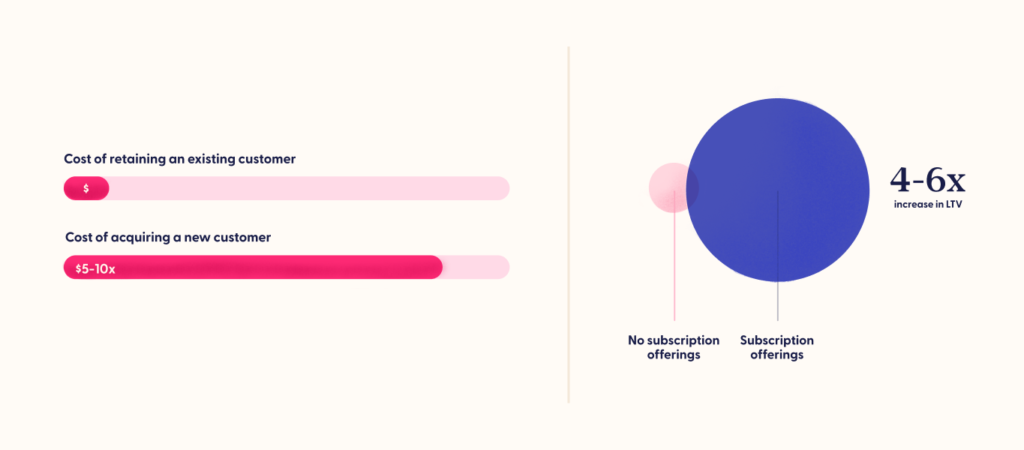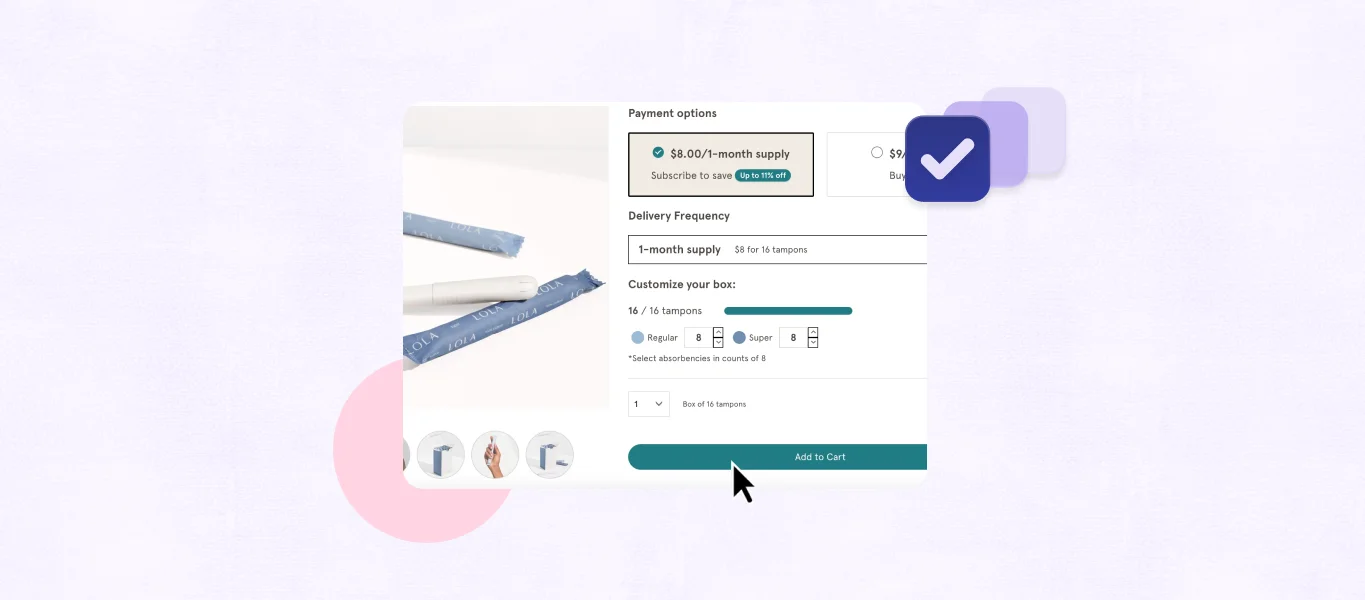As more and more businesses realize the incredible power of recurring revenue, subscription management has become more important than ever. This refers to all the things that you, as a merchant, control to create a great subscription experience, from the moment a customer signs up until they stop their service with you.
However, there is no one-size-fits-all approach to subscription management. To manage subscriptions that keep your customers with your business, you need a well-chosen combination of different tools and software solutions. These should work together seamlessly to handle all the different aspects of your recurring offerings to create a superb customer experience that sets you apart from the competition.
In this blog series, we’ll break down everything you need to know about subscription management—starting here with the five different types of subscription management solutions. For more in-depth information on managing subscriptions, download our free ebook, A Merchant’s Guide To Subscription Management.
What’s a subscription management solution?
Subscription management solutions are tools that handle multiple aspects of subscription management for your business. That includes everything from the recurring billing process to automated invoicing to dunning management, analytics, and more.

Because different subscription services have different needs, a range of different types of subscription management solutions exist on the market today for a variety of different budgets, product types, subscription models, and stages of growth.
Each solution type has its own focus, benefits, and potential drawbacks—making it all the more important that you choose the right one for your unique subscription business.
The different types of subscription management software
There are five main types of subscription management solutions: out-of-the-box-only solutions, API-only solutions, custom-built solutions, SaaS software–first solutions, and holistic solutions. Now, let’s dive deeper into the benefits, focuses, and potential drawbacks of each.
Out-of-the-box-only solutions
Relatively new to the market, out-of-the-box-only solutions see themselves as “changing the game” of subscription commerce. They empower merchants to set up recurring billing relatively quickly and easily, making them a great choice for very small businesses, brands who are new to subscriptions, or those whose priority is a speedy launch.
However, out-of-the-box only solutions may not be the best fit for businesses who are looking to scale their subscription offerings or innovate in the recurring billing space. They’re often not built or tested at scale, and can require more manual upkeep when they lack development tools and support documentation.
API-only solutions
If your priority is to customize your subscriptions as much as possible, and you have ample resources to support your goals, an API-only subscription management solution could be a great choice for your brand. This solution type offers a broad suite of APIs, which a strong development team can use to create custom subscription use cases and build integrations with other core ecommerce features.
Of course, endless customization can come at a price. API-only solutions typically have high overhead and maintenance costs, particularly around internal development, operations, and customer experience. And though they can pave the way for custom use cases, they cannot deploy them independently—often, merchants must rely on external agencies for this type of development support and ecommerce expertise.
Custom-built solutions
Custom-built solutions are very similar to API-only solutions in that they enable custom-built, flexible subscriptions. The main difference? Custom-built solutions come with a knowledgeable development partner who can pair this custom software with an in-depth knowledge of ecommerce. With a white glove support structure, they’re an attractive option for brands with ample resources and complex builds.
Like API-only options, custom-built solutions often come with high upfront costs and maintenance fees, as well as a long development time. They can also come with a more limited pace of innovation on their core products, and difficulties with pacing. Brands who choose these highly customizable options may risk having a one-off build that requires a specialized developer to maintain.
SaaS subscriptions–first solutions
SaaS (software as a service) subscriptions–first solutions are some of the most established and mature subscription management solutions on the market. As the name suggests, they’re best for B2B software companies, as they’re built for the digital products of SaaS companies. A major benefit is their ability to integrate with a wide range of payment processors, making payment options highly accessible for customers.
Due to their focus on digital products, these solutions typically lack the functionalities for physical products. They’re not tied into an ecommerce product catalog, or technologies like shipping, tax, and shipping capabilities. Because of this, they aren’t typically a great match for physical subscription businesses.
Holistic solutions
Holistic subscription management solutions, like Recharge, can be an ideal match for physical subscription businesses. They often enable flexible checkout and delivery options, offer out-of-the-box integrations with shipping, taxes, and inventory management systems, and easily handle recurring purchases, one-time purchases, and mixed carts. They’re also easy to customize, even as fast-growing merchants scale their business.
Because of their focus on physical products, holistic solutions may not be a great fit for B2B software companies. Additionally, some solutions in this category may be outpaced by the competition when it comes to support for niche use cases, or new platform adoption.
Effective subscription management creates seamless customer experiences
When chosen well, a subscription management solution has the power to strengthen your customer relationships, increase customer lifetime value, and fuel your business with a steady stream of subscription revenue. The first step to choosing correctly: knowing your options. By selecting a solution that’s aligned with your business model, budget, product types, and other unique business needs, you can set your brand up for long-term success with recurring offerings.
Interested in learning more about the different types of subscription management solutions? Download A Merchant’s Guide to Subscription Management for free today.



